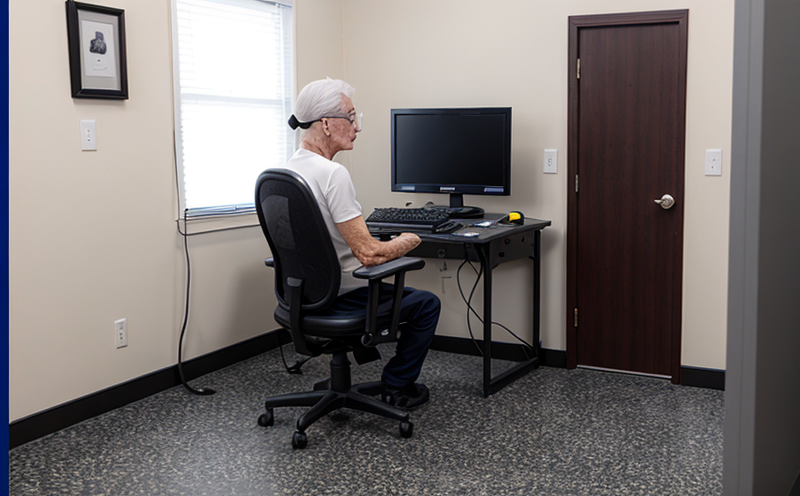DIN 53863 Abrasion testing of technical fabrics
The DIN 53863 standard is a significant benchmark in the textile industry, particularly for materials used in sectors where durability and wear resistance are critical. This test evaluates the abrasion resistance of technical fabrics under controlled conditions to ensure that they meet specific performance requirements. The methodology involves subjecting fabric specimens to repetitive friction against an abrasive surface with defined parameters such as weight, speed, and cycle count.
This testing is crucial for industries like automotive, aerospace, and outdoor gear manufacturing where the longevity and reliability of materials are paramount. Compliance with this standard ensures that products can withstand harsh environmental conditions without compromising on quality or performance. The test helps manufacturers to identify potential issues early in the development process, allowing them to make informed decisions about material selection and processing.
The DIN 53863 abrasion testing is conducted using a specialized machine known as the Martindale Abraser or similar apparatus. This equipment applies standardized conditions of friction, which simulate real-world wear scenarios. The abrasion resistance is measured by counting the number of cycles before the fabric fails to meet specified criteria for integrity and appearance.
The acceptance criteria are based on visual inspection after a set number of cycles, typically 10,000 or more, depending on the expected service life of the product. Compliance with these standards not only enhances brand reputation but also ensures regulatory compliance in many countries around the world.
| Test Parameter | Description | Acceptance Criteria |
|---|---|---|
| Weight of Abrasive | The weight used to apply friction during testing. | Typically 50 grams, though this can vary depending on the fabric type and expected use. |
| Cycle Count | The number of abrasion cycles required before failure. | Usually set at 10,000 or more, adjusted based on product specifications. |
| Speed of Abraser | The rate at which the abrasive moves against the fabric. | Standardized to ensure consistent testing conditions. |
| Type of Abrasive | The material used for abrading the fabric. | Abrasives can include sandpaper, steel wool, or other materials as specified by the standard. |
The testing process is highly regulated and follows strict protocols to ensure accuracy and repeatability. It involves rigorous preparation of specimens, calibration of equipment, and adherence to standardized procedures. The results from this testing provide valuable insights into the durability of fabrics under specified conditions, enabling manufacturers to optimize their products for enhanced performance.
In addition to providing a clear indication of abrasion resistance, DIN 53863 testing also helps in comparing different materials and manufacturing processes. By subjecting various fabric samples to identical conditions, companies can make informed choices about which materials offer the best balance of durability and cost-effectiveness.
Customer Impact and Satisfaction
The implementation of DIN 53863 abrasion testing significantly enhances customer satisfaction by ensuring that products meet or exceed expected performance levels. By adhering to these stringent standards, manufacturers can deliver high-quality materials that are reliable and long-lasting. This not only builds trust with customers but also fosters loyalty through consistent product quality.
- Enhanced Durability: Products tested according to DIN 53863 last longer, reducing the need for frequent replacements or repairs.
- Better Performance: Materials that pass this test perform better under real-world conditions, leading to a superior user experience.
- Increased Reliability: Customers can rely on products that have undergone rigorous testing, which increases overall satisfaction.
Moreover, compliance with DIN 53863 helps businesses differentiate themselves in the market by offering premium-quality products. This competitive edge is crucial for maintaining customer loyalty and attracting new customers who value reliability and performance.
Competitive Advantage and Market Impact
- Innovation: By staying compliant with international standards like DIN 53863, companies can innovate by pushing the boundaries of what is possible in terms of material performance.
- Regulatory Compliance: Meeting these standards ensures that products are legally acceptable in various markets, thereby avoiding potential legal issues and penalties.
- Better Reputation: Consistent adherence to high-quality testing procedures improves the company’s reputation among consumers and industry peers.
DIN 53863 abrasion testing also provides a competitive advantage by enabling companies to identify and address potential weaknesses in their products early on. This proactive approach can lead to significant cost savings by preventing costly redesigns or recalls later in the product lifecycle.
In terms of market impact, DIN 53863 compliance helps businesses to meet increasing demands for sustainable and high-performance materials. As environmental concerns grow, customers are increasingly seeking products that are both durable and environmentally friendly. By adhering to this standard, companies can demonstrate their commitment to sustainability while also meeting customer expectations.
Use Cases and Application Examples
- Aerospace: Ensuring that fabric components in aircraft interiors withstand high levels of abrasion over extended periods.
- Military: Developing durable uniforms and gear that can endure harsh field conditions without compromising on performance.
- Oil & Gas: Manufacturing equipment covers and protective garments that can handle abrasive environments underground or at sea.
| Use Case | Description |
|---|---|
| Aerospace | Testing interior fabrics for aircraft to ensure they can withstand the rigors of in-flight conditions and passenger use. |
| Military | Evaluating uniforms and gear that must endure harsh field conditions, including sandstorms and other abrasive environments. |
| Oil & Gas | Assessing equipment covers and protective garments to ensure they can withstand abrasive materials and environments in oil rigs or offshore platforms. |
The DIN 53863 abrasion test is particularly relevant for sectors where the material's longevity directly impacts operational efficiency and safety. By ensuring that fabrics meet these stringent standards, companies can enhance their product offerings and gain a competitive edge in the market.





